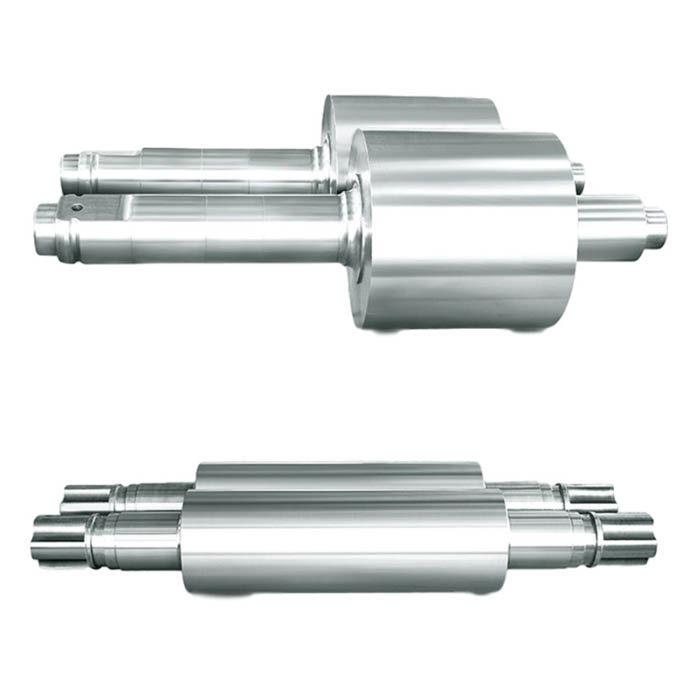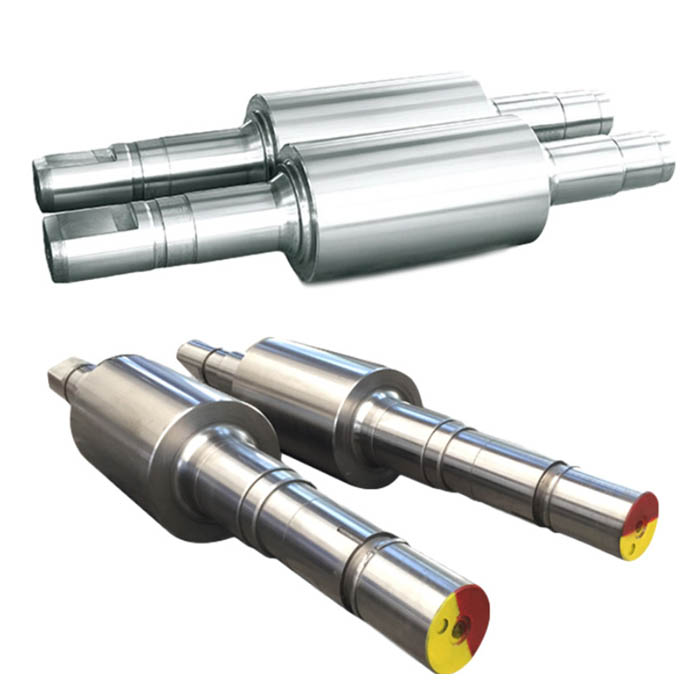The cold rolling roll manufacturing process can be divided into three stages: the first stage was from 1940 to 1960, when forged steel rolls were mostly used as cold rolling work rolls, smelted in electric arc furnaces, without vacuum degassing. The goal was to have a uniform roll body hardness without catastrophic fracture during roll manufacture and use. The Cr content in the roll steel is only 1.5% to 2.0%. The second stage was from 1960 to 1970. During this period, the electroslag remelting method was used to manufacture high-quality cold rolls. The inclusion level was greatly improved, and the quality of the rolls was significantly improved. During this period, the process of smelting steel for rolls by vacuum degassing method appeared at the same time, and the non-destructive testing method was used to inspect the rolls, which greatly reduced the breakage and spalling accidents. The layer depth reaches 15.8 to 19 mm. The third stage was from 1980 to 1991, when the rolling mill was improved, the quality requirements for cold-rolled sheets were increased, and therefore the quality requirements for the rolls were increased. At this time, the management level of the use of the rolls was also improved, which greatly reduced the peeling of the rolls.

In the 1970s, induction heating and cold treatment technology appeared in the roll manufacturing technology, which increased the depth of the hardened layer of the roll from less than 10mm to about 15mm. After induction hardening of the cold roll, the surface hardened layer produces residual compressive stress, and the core produces residual tensile stress. Since the induction heating is limited to a certain depth of the surface layer, the internal temperature of the roll is still low, so the residual stress generated after quenching is smaller than that of the overall quenching, and the roll does not need to drill the center hole. Due to the various advantages of induction hardening, it has quickly become the mainstream technology for cold roll manufacturing.
Cold rolls have to bear a lot of rolling stress during the working process, and problems such as welding seams, inclusions and edge cracks in the rolled piece are easy to lead to instantaneous high temperature, which makes the work rolls subject to strong thermal shock, resulting in cracks, sticking, and peeling off. even scrapped. Therefore, the cold roll should have the ability to resist cracking and spalling caused by bending stress, torsional stress and shear stress, and also have high wear resistance, high contact fatigue strength, high fracture toughness and thermal shock strength, etc. . Therefore, how to improve the service life of the roll has always been a major problem faced by the roll manufacturing industry.
The materials commonly used for cold-rolled work rolls at home and abroad are GCr15, 9Cr2, 9Cr, 9CrV, 9Cr2W, 9Cr2Mo, 60CrMoV, 80CrNi3W, 8CrMoV, 86CrMoV7, Mo3A and Cr5 series. In order to improve the depth of the hardened layer and the contact fatigue life, reduce the brittleness and overheating sensitivity of the hardened layer, and also to meet the further requirements of the rolling stock for the mechanical properties and service performance of cold-rolled work rolls, since the middle and late 1980s, foreign roll The production plant optimized the chemical composition of the 5%Cr cold rolled steel, mainly by increasing the content of Mo and V or adding elements such as Ti and Ni in the 5%Cr steel. In a 5% Cr steel roll with about 0.1% Ti added, Ti is precipitated in the matrix in the form of CN compound (TiCN) in fine form. After friction loss, TiCN falls off and scratches are formed on the surface of the roll to regenerate moderate roughness. In the actual operation of the tinplate rolling mill, high-speed rolling can be realized from the initial stage of rolling by effectively taking advantage of the small reduction in roughness.

The cold roll material is still developing continuously. Some experts and scholars believe that the cold roll should be developed in the direction of high chromium, even high-speed steel and semi-high-speed steel. Due to the increase of chromium content, the depth of the hardened layer increases, and the carbide types in the material can all be converted into M23C7 type. The representative countries are mainly the United Kingdom, the United States, Japan, etc.; The reason for the secondary quenching is that when micro-cracks appear on the surface of the roll, if they are not removed in time, as the rolling progresses, the micro-cracks will slowly expand along the radial and circumferential directions at the same time, and then peel off. The depth is generally to the depth of the hardened layer. If the hardened layer is very deep, the possibility of internal cracks during quenching increases, so that spalling will directly lead to scrapping, and the loss will be large.

Post time: Mar-21-2022
